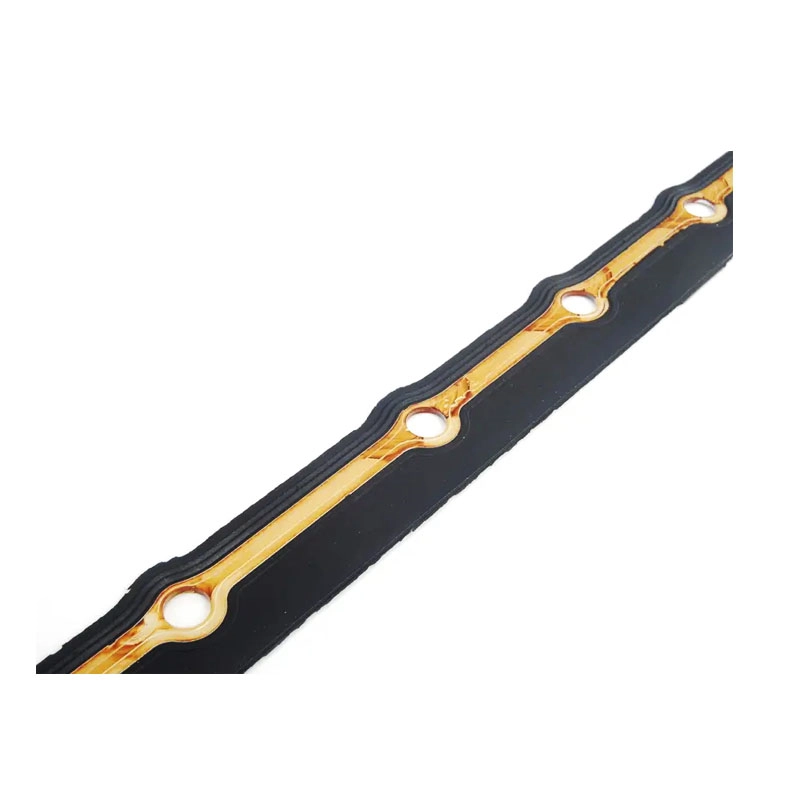Understanding the Importance of Packing Shaft Seals in Mechanical Equipment Performance
Understanding Packing Shaft Seals A Comprehensive Overview
Packing shaft seals, often simply referred to as shaft seals, play a crucial role in various mechanical systems, particularly in rotating machinery. These seals are designed to prevent the leakage of fluids along the shaft, ensuring that lubricants remain within the system while keeping external contaminants at bay. In industries ranging from automotive and aerospace to manufacturing and oil & gas, packing shaft seals are essential components that maintain operational efficiency and equipment longevity.
What Are Packing Shaft Seals?
Packing shaft seals are typically composed of several materials, including elastomers, plastics, and metal components. They function by forming a barrier around the rotating shaft, effectively sealing the interface between the shaft and the housing. There are various designs of packing shaft seals, each tailored to specific applications and requirements. Common types include lip seals, mechanical seals, and gland packing.
Importance of Packing Shaft Seals
The primary function of packing shaft seals is to control the leakage of fluids. Whether it’s hydraulic oil, water, or any other lubricant, the integrity of these seals is vital for the efficient operation of equipment. Fluid leakage can lead to increased operational costs, reduced efficiency, and potential environmental hazards. Moreover, sealing systems are crucial for maintaining pressure levels within pressurized systems, which is especially important in sectors such as oil and gas.
In addition to preventing leakage, packing shaft seals also protect the internal components of machinery from contaminants such as dust, dirt, and moisture
. By providing a robust barrier, these seals help prolong the life of the equipment and reduce maintenance downtime.Choosing the Right Packing Shaft Seal
Selecting the appropriate packing shaft seal for a specific application involves several considerations
packing shaft seal

1. Operating Conditions Factors such as temperature, pressure, and the type of fluid being sealed are critical in determining the right material and design of the seal. High temperatures may require materials that can withstand thermal expansion, while corrosive fluids may call for chemically resistant components.
2. Speed of Operation The rotational speed of the shaft affects the design of the seal. High-speed applications typically require seals that can tolerate dynamic conditions without excessive wear.
3. Installation Ease of installation is an essential factor, especially in applications where components need to be frequently serviced. Some seal designs are more user-friendly than others.
4. Cost-Effectiveness While selecting high-quality seals may involve a higher initial investment, the long-term benefits of reduced leakage and maintenance can lead to significant savings.
Maintenance and Replacement
Regular maintenance of packing shaft seals is necessary for optimal performance. This can involve periodic inspections to check for signs of wear and tear, such as cracking or distortion. In many cases, replacing worn seals before they fail can prevent catastrophic failures and costly repairs.
Conclusion
Packing shaft seals are small yet vital components in the machinery world. Understanding their function, selection criteria, and maintenance is crucial for anyone involved in equipment operation and management. By investing in the right packing shaft seals and ensuring their proper care, industries can improve efficiency, reduce costs, and enhance overall productivity. With the continual advancements in seal technology, the future of packing shaft seals looks promising, promising even greater reliability and performance across various applications.
-
The Ultimate Guide to Boat Propeller Bearings and Trailer Wheel Bearings
News Jul.31,2025
-
The Essential Guide to Marine Bearings and Boat Trailer Wheel Bearings
News Jul.31,2025
-
The Complete Guide to Heavy Duty Seals: Protecting Doors and Spaces Efficiently
News Jul.31,2025
-
Essential Guide to Marine Shaft Bearings and Boat Trailer Axle Bearings
News Jul.31,2025
-
Comprehensive Guide to Marine and Trailer Bearings for Safe Boating and Transport
News Jul.31,2025
-
Comprehensive Guide to Automotive Oil Seals: Protecting Your Engine and Shafts
News Jul.31,2025
-
Understanding Automotive Oil Seals: Essential Components for Engine and Shaft Protection
News Jul.30,2025
Products categories















